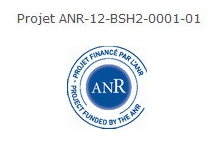Project : The role of the Initial Accent in prosodic structuring in French - From phonology to speech processing -
Version française
The present project aims at describing the characteristics of the French accentual system in order to bring to light the underlying phonological structure of this language. It addresses the status of the bipolar pattern /IA FA/ (initial accent-final accent), considered as the basic metric pattern in French.
An originality of the project is to tackle this question through the combination of two complementary phonological approaches: the autosegmental metrical approach (AM), which largely dominates the description of the prosody of many languages in its tonal aspects; and the metrical and functionalist approach (MF), which not only compensates AM's lacunae in taking into account the crucial rhythmic aspects of prosody, but also confronts its views on various speaking genres. Such a combination of approaches is necessary to account for the specificity of French prosody, still too often viewed as a 'language without accent' or a 'boundary language'. Our main proposition consists of the dissociation between boundary and prominence phenomena, allowing us to encompass the complexity of the rules underlying the occurrence of the bipolar pattern /IA FA/.
We propose to apply the same analyses to different corpora, from laboratory speech to semi-controlled speech and dialogic spontaneous interaction. Production and perception experiments (behavioural and using brain imaging (EEG) techniques) will allow us to show that the bipolar pattern has a phonological reality in French, that it is both produced and perceived, and that it resists to the numerous sources of variability inherent to each speaking genre. We wish to concentrate our investigation more particularly on IA, which is less described than FA in French, in order to show that it plays a fundamental role in speech structuring, speech segmentation and lexical access. The production studies will allow us to refine the acoustic-phonetic characterization of IA and FA, with potential application to automatic detection of prosodic cues on large, spontaneous corpora.
The choice of the present project's consortium is particularly sensible insofar as it brings together experts on each discipline (linguistics and psycholinguistics) and each approach (laboratory phonology, corpora analysis, etc.). This consortium will allow for the emergence of a new vision of French prosody, totally in phase with current international debates on the merging between the phonological approach - restricted up to now to laboratory speech - and those approaches underlying the investigation of large speech corpora. The MF approach defended by the leader of the project thus brings an essential contribution onto the international scene, through two main aspects. First, it accounts for speech invariants through the study of speaking genres' variability. Second, it echoes the current international debates on the necessity to go past the sole description of tonal levels, which AM relies on. The MF approach brings to the fore the metrical and rhythmical dimensions of speech, which are as central to the prosodic description of a language as the tonal dimension.






